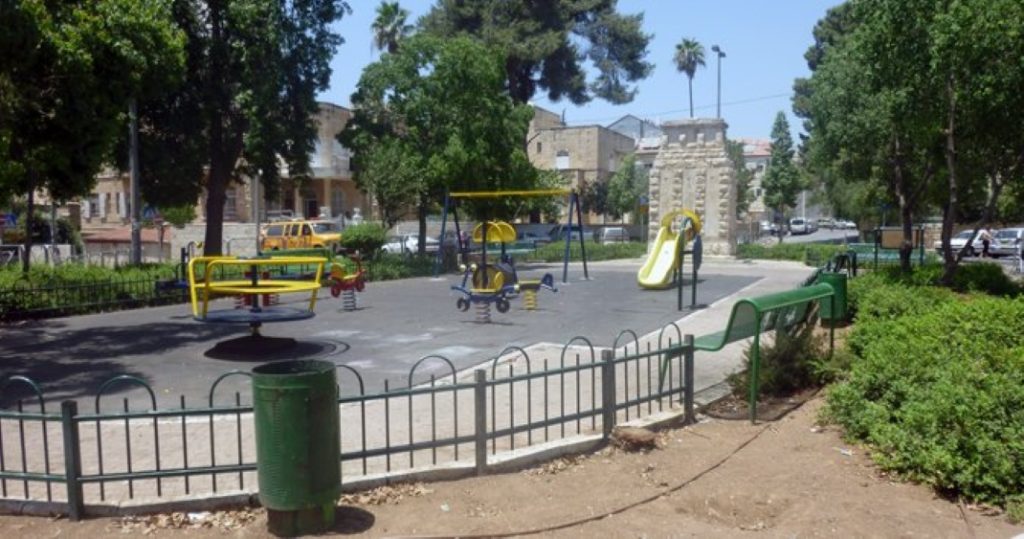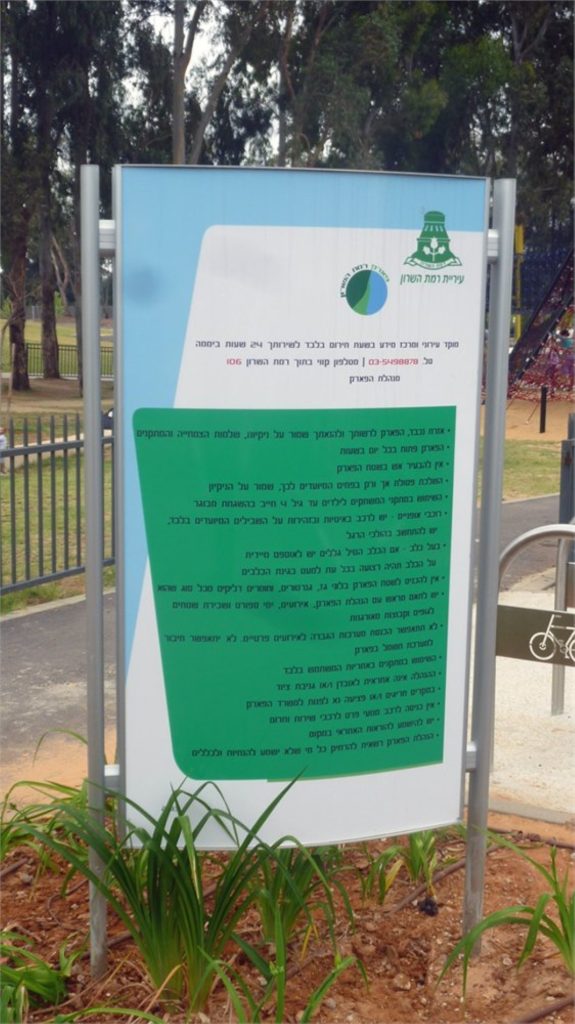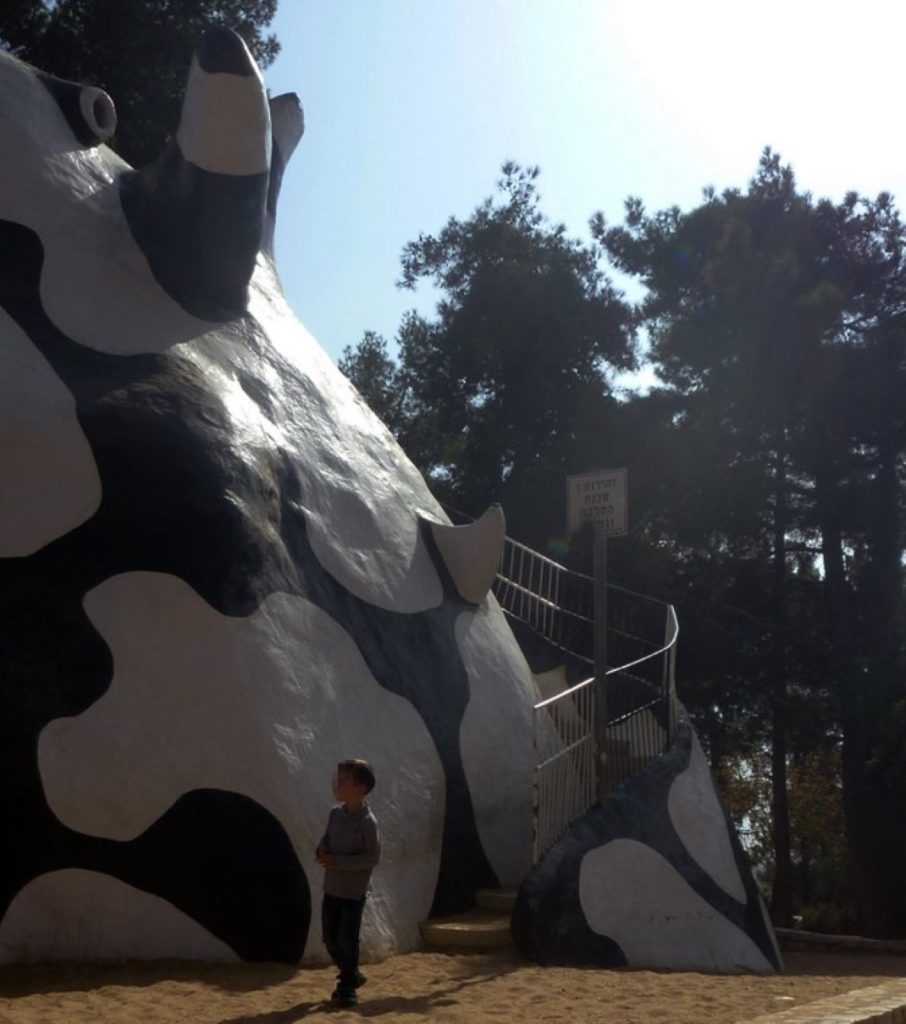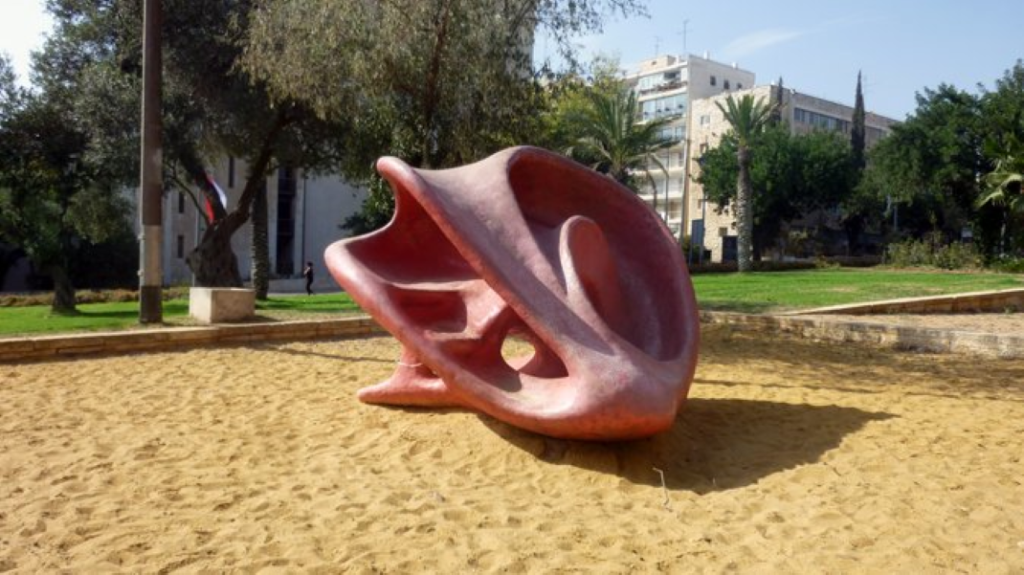Playgrounds are some of the most tactile parts of our built environment. Our interaction with them is primarily bodily.
Playgrounds are some of the most tactile parts of our built environment. Our interaction with them is primarily bodily. In contrast to ordinary architecture where our bodily experience of its physical structures and forms is usually confined to our feet, playground architecture involves full bodily contact with the material parts, the “matter,” of which its forms are composed. For the principle of “truth to materials” to be implemented in this type of architecture it must be manifest and physically discernable by our bodies.
Play enables us to enter into a “parallel universe” that is physically and experientially separate from our ordinary lives. Play enables us to transcend the goal-oriented, profit driven world of the everyday and to temporarily experience ourselves as autonomous free beings(1).
One of the basic aspects of activities associated with play is the presence of risk and danger. Risk, in one form or another, seems to be a necessary component of having fun – of leaving the safety of the familiar and the normal.
The presence of these two aspects of play, the parallel universe image and the presence of danger are, I would argue, essential to the experience of play. The expression to be “beside oneself” that we use to describe a strong feeling and emotion such as joy or fear is also used to characterize the experience of the numinous in religious life. I contend that generally speaking experiences that we describe by the imagery of parallel existence also involve elements of risk and danger(2). In relation to playgrounds, the emotions of fun associated with play are inherently connected to some form of risk and to some sense of being separated from the laws and norms that sustain people and children during the regular hours of the day.
Like Caillois and Huizinga, I claim that play in the context of a playground is essentially different than recreation activities such as sports. This is due to the fact that in playgrounds there are no clear and apparent benefits to be gained in terms of health, personal gain or even the creation of social networks or bonds(3). The main benefit or utility that a child experiences on a swing is the swinging experience itself; the use value of this instrument is in facilitating having fun.
This experience is tactile and as such is radically different than playing with electronic devices, toy cars or dolls(4). The tactile feature adds, inter alia, the risk factor, the element of danger that I argue is an integral part of the playground experience.
The feelings of danger and risk that are present in the playground is created by what I have termed “perceived danger.” By this I mean the tension and the excitement the child feels just before and during the descent on a slide. Various researchers, such as Scott G. Eberle, have analyzed the experience in terms of more parts, but to my mind “perceived danger” is the main component that differentiates playground play from other forms of play and from everyday experience.
Perceived danger is created from a series of visual, gravitational, formal and material actions and designs. For example, a child on a swing can increase swinging velocity on her own (even if initially pushed to get started) but once the process of pendular motion begins stopping the motion instantaneously by oneself is not a simple matter.
Additionally, fabricated mechanisms are introduced to enhance the basic experience of the structure, such as the merry-go-rounds, the slides, balance beams, etc. A classic example of this is the “Mifletzet” (Monster) slide in Jerusalem. The design of the approach to the slide, which has the child pass from a darkened cove into the bright sunlight intensifies the transition from static to dynamic states or from being in control to lacking control.
That being said, no designer or parent would want to discover that the “perceived” danger is actually real. The excitement generated by the experience of not being in control presupposes an implicit but firm belief that the designer made sure that the facility was safe. There is a tacit understanding between the designer, the builder, the user and user’s family that the facilities are all “to code,” which means that they successfully underwent safety and structural analysis.

During the 1970’s and 80’s, when a burgeoning litigious culture began to flourish in the Western world, playground development become a frequent battleground for designers, planners and legislators. As a result playgrounds started becoming more uniform, safer and consequently basically boring and unimaginative. This phenomenon was noticeable most pronouncedly in the United States. According to Joe L. Frost, the U.S. Consumer Product Safety Commission playground safety guidelines grew from thirteen (13) pages in 1981 to forty-three (43) in 1997 and, in 2006, a revised draft contained eighty-one (81) pages(5). It seems clear that the planning and legislative bodies made safety issues the predominant concern in playground design. It is undoubtedly easier to count injuries than to quantify fun.
Research has shown that children tend to use boring playgrounds less than the more imaginative ones and for purposes other than those for which they were intended. This phenomenon can have negative social consequences in two ways. First, it may be linked causally to the social problem of obesity insofar as a lack of physical exercise is connected to this problem. Second, the “creative” use of the playground for purposes it was not intended, such as climbing on structures not meant for scaling, may result in serious injuries. This, ironically, is the result of a child’s seeking danger and risk in facilities that lack what I have called “perceived danger” because designing facilities with “perceived danger” was prohibited in the name of safety.

Those who subscribe to the safety camp can show statistics that prove a decline in the quantity and severity of playground injuries. This result is no doubt positive. That being said, it is much harder to statistically quantify the decline in the quality and quantity of fun. Nonetheless, there is growing resistance to the dominance of the more conservative representatives of this narrow approach.
The opposition’s point of view that was publicly aired in Lenore Skenazy’s famous article, “Why I Let My 9-Year-Old Ride the Subway Alone“, led to a national debate, which included the sending of actual complaints to departments of social services. One of the more positive results of this controversy was the emergence of a worldwide discussion on the issue of protectiveness. Tim Gil of Great Britain, who wrote No Fear: Growing up in a Risk Averse society is one of the most vocal advocates for the counter trend.
The growing influence of this trend can be seen in the creation of more experimental playgrounds, such as Adventure Playgrounds, which use various types of “junk”, timber, nails, saws, hammers, etc. These playgrounds became popular in the 1970’s in Scandinavia and in many Kibbutzim in Israel. Malka Haas of Sde Eliyahu developed what she called the “Junk Garden”, which is very similar to the Adventure Playgrounds. An essential aspect of these playgrounds is that the facilities be created by the children. But what is most interesting about this genre in terms of this article is the view that these experimental playgrounds need not strive to be 100% safe at any cost. While this is not the only approach to playground architecture advocated by the challengers to the present Orthodoxy, I discussed it because of its extreme contrast with old school approach.
The common idea shared by contemporary experimental playground architects is their critique of the loss of childhood independence and decision making ability brought about by the dull, unchallenging, sterile-safe environments of modern playgrounds. While they do not belittle or scoff at the importance of safety they wish to draw attention to a vital and necessary component of playground that has been discarded because of the exclusive concern with safety, and that is, play.

It is hard to measure the needed balance between fun and safety. A classic example for a balanced approach is the “Mifletzet” (Monster Park) mentioned above. This play-scape (originally named “The Golem”) was designed by Niki Saint Phalle and constructed between the years 1971-1972. This large statue has only three slides protruding from the monster’s mouth (the swings in its belly had been removed decades years ago).
This play-space has become a symbol and landmark of the neighborhood and of the city of Jerusalem as well. There is almost no time of day or night when the slides are not used. In 2009 a dispute arose between the municipality of Jerusalem and the national regulatory body in charge of safety standards. The latter claimed that according to the standards published in 2006, the playground was no longer considered safe. The problem was that the slides could not be changed to code because they are made of cast-in-place concrete. The municipality, however, resolved the seemingly insoluble dilemma by re-designating the playground as an “International art piece with special significance to the city which is protected by copyright laws and therefore is a play sculpture.” The monster was no longer a “playground” and therefore not subject to the standards that apply to playgrounds. A special effort was made because there were two competing values, two “goods”, that could not coexist without a compromise of the kind the city came up with.

Our challenge as builders, architects, landscape architects, citizens, municipal workers as well as enforcers of safety standards is to enable the development of challenging and interesting playscapes. There is a need for an innovative vision in the field of playground design that will not regard “the code” as an insurmountable obstacle but as a catalyst for the development of playscapes that add urban identity to our environment, playspaces that people want to use, playgrounds that are challenging because they succeed in conveying a sense of “perceived danger” despite the actual safety of their facilities.

(1) For the purpose of this article I shall relate to non-competitive forms of play.
(2) See Rudolph Otto, Das Heilige – Über das Irrationale in der Idee des Göttlichen und sein Verhältnis zum Rationalen
(3) Game Design Reader: A Rules of Play Anthology, Cambridge, Mass. 2006, pp.123-125, 128., Johan Huizinga, Homo Ludens: A study of the Play Element in Culture, Boston, 1955, p. 14. Roger, Caillois, “The Definition of Play and the Classification of Games”, in Salen Katie and Zimmerman Eric, The
(4) There are theories which focus on the derivative benefits of playground play, but in this article I concentrate exclusively on the self-rewarding experiences of playground play.
(5) “What’s Wrong with America’s Playgrounds and How to Fix Them: An Interview with Joe L. Frost”, American Journal of PLAY, Fall 2008, pp. 146-148.



